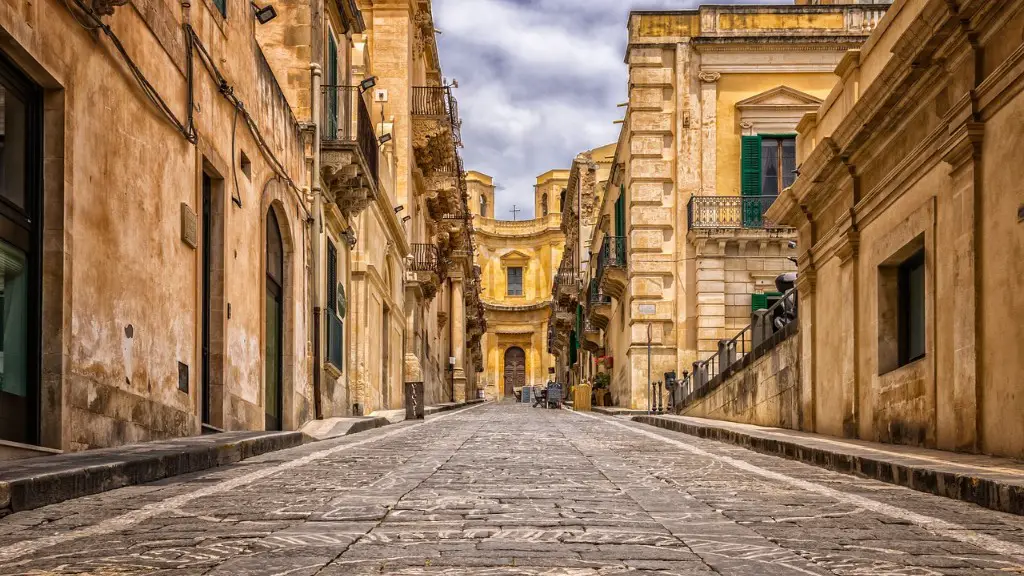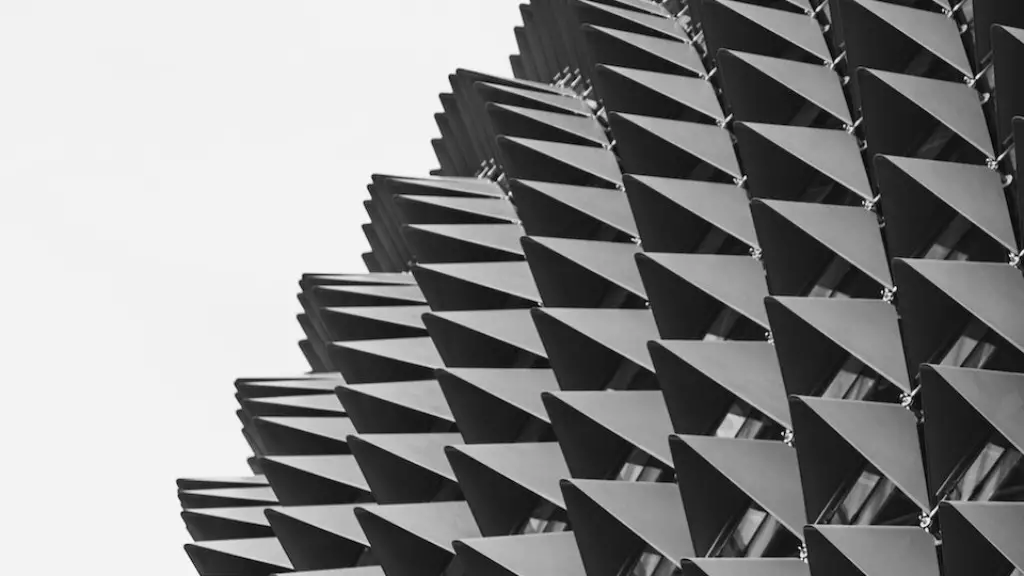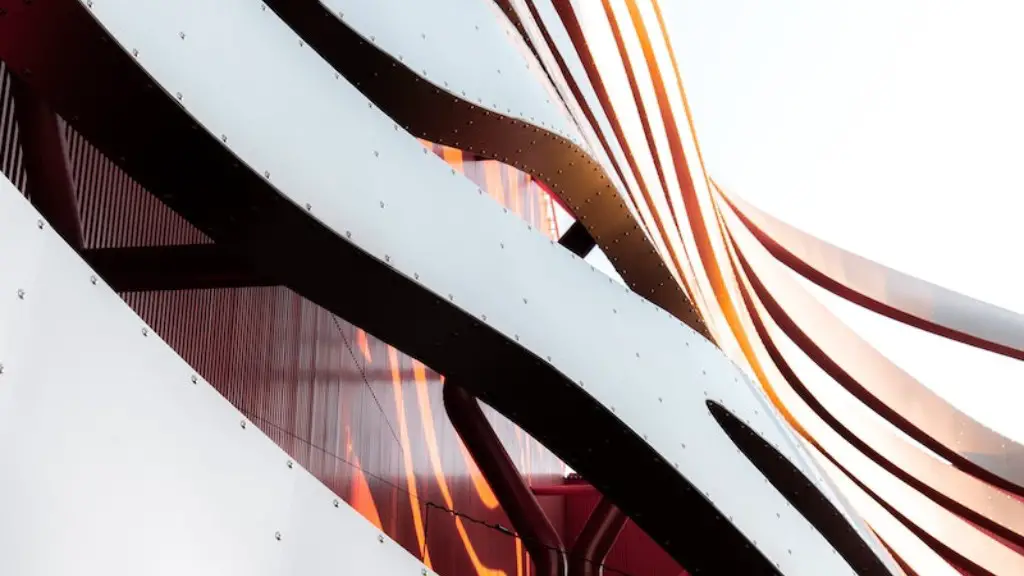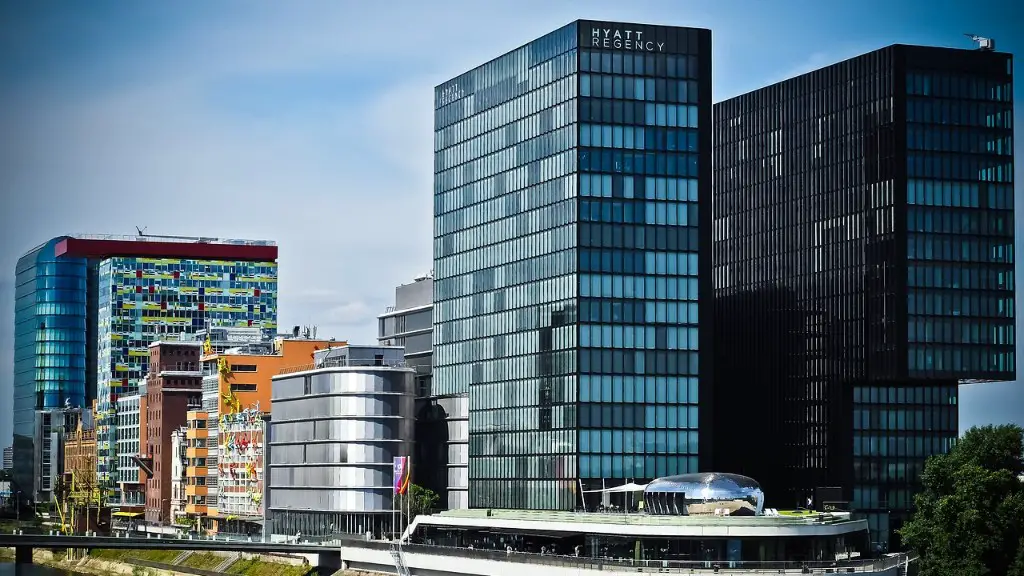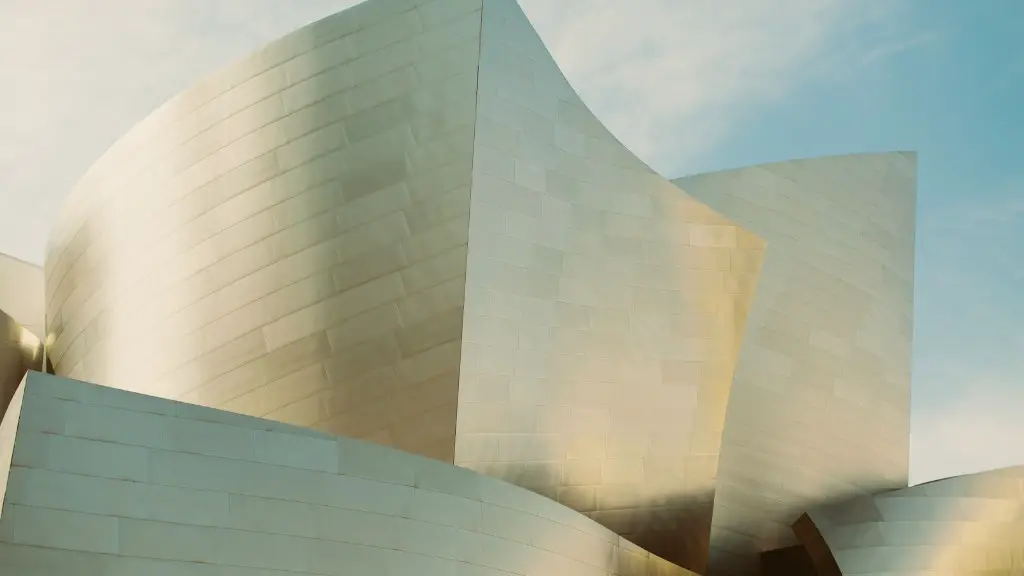Gothic architecture is one of the most iconic and distinctive styles of architectural design from the Middle Ages, and it is often credited to Medieval times. The term ‘Gothic’ was originally used to describe a style of art that developed during the Middle Ages, and this has since been transferred to the architectural designs inspired by that period of history. Gothic architecture is characterized by its use of pointed arches, ribbed vaults, and large stained glass windows.
The original intention of Gothic architecture was to create leviathan of a building, allowing citizens to feel through architecture like they were entering the intimate presence of God. Gothic architecture is known for its vertical orientation, soaring above the skyline and allowing light to illuminate its interior space. It is characterized by light, airy lines and intricate detailing that serves to draw the viewer’s eye up to distant heavens.
Gothic architectural designs were primarily developed in Europe, particularly in France and England, but have been adopted in many other parts of the world. During the Middle Ages, these structures were used for both secular and religious purposes. Churches and monasteries adopted the style of construction, as did many palaces and castles. Today, Gothic architecture is still widely used for churches and cathedrals, although it has made its way into many domestic and commercial buildings as well.
Many experts point out that Gothic architecture was itself a late-medieval style and arose in the 12th and 13th centuries, long after classic medieval architecture styles had gone out of fashion. Gothic designs were seen as radical compared to other architectural styles of the time and incorporated new and innovative elements such as the rib vault and the pointed arch.
Other experts argue that the Gothic styles of architecture and interior design were preceded by Romanesque styles. Romanesque architecture was employed extensively during the 10th and 12th centuries and was characterised by its round arches, ribbed vaults and groin vaults. This style of architecture was commonly used in churches, cathedrals and other monuments at this time, and many argue that it was a major influence on the development of Gothic architecture.
Despite this, some historians deny that the influence of Romanesque architecture on the development of the Gothic was significant, instead arguing that the Gothic style was a reaction to the limitations of Romanesque and that many of the features of Gothic architecture actually existed in Ancient and Byzantine cultures. This is evidenced by aspects such as the pointed arch, which was used extensively in Byzantine architecture, while in Romanesque architecture it was fairly limited.
Ultimately, the question of whether Gothic architecture is a ‘Medieval’ style is still open to interpretation. Gothic architecture was certainly developed during the Middle Ages, a period of history associated with Medievalism, but whether it truly reflects medieval architectural styles and philosophies is still a matter of debate.
Influence of Gothic Architecture on Later Styles
Gothic architecture had a profound influence on the development of later architectural styles, most notably the Renaissance and Baroque styles. These styles of architecture embraced a more symmetrical and classical style, taking away from the light and airy lines of Gothic architecture and instead focusing more on concrete detail and decoration. Gothic architecture also served as a major source of inspiration for later Romanesque and classical style architects, as it was in stark contrast to the traditional styles of the time.
One of the most prominent influences of Gothic architecture can be seen in the origins of the International style of architecture. This style, which developed in the 19th century, is characterized by rose windows, thin columns and spires, and is heavily based upon the designs of French Gothic cathedral. The International style merged aspects of Gothic architecture with more traditional classical design elements in an effort to create a unique style for modern buildings.
Gothic architecture has proven remarkably resilient over the centuries and to this day still has an impact on contemporary buildings. Many architects continue to use elements of Gothic architecture in their projects, taking inspiration from this historic style and bringing it into modern buildings.
Modern Gothic architecture differs from its historical predecessors in that it is more open, less detailed and relies heavily on the use of modern materials and techniques for construction. Many architects have used the elements of Gothic architecture to create unique buildings, such as Disney’s Cinderella Castle in Florida and London’s City Hall. Gothic architecture continues to impact the design of buildings around the world.
Analysis of Gothic Architecture
Gothic architecture is a complex and often misunderstood style of design. Many people have a vague notion of what Gothic architecture looks like, but have difficulty in properly classifying and categorising it.
Gothic architecture is often confused with Medieval architecture. While the two are sometimes associated together, the actual categorisation of Gothic is a late-medieval style of art and architecture while Medieval architecture was used before the 12th and 13th centuries.
Another common misconception is that Gothic architecture is associated with darkness and death. This is largely due to the fact that many Gothic buildings were used as churches or cathedrals, which were often associated with death and the afterlife. However, Gothic architecture is actually quite light and airy compared to other medieval styles, with its soaring vaults and high windows allowing light to flood its interiors in a way that few other styles could.
Gothic architecture is also often seen as a symbol of wealth and power. This is because many Gothic architectural designs were employed in castles, palaces and other grand residences for high-ranking time. Although this may have been the case in some instances, the majority of Gothic designs were actually used for more traditional purposes, such as churches and monasteries, which suggests that the main purpose of Gothic architecture was to create spaces that could bring people closer to the intimate presence of God.
Modern Expressions of Gothic Architecture
The Gothic style is still widely used today, although usually in a more modern form. The most obvious example of this is in the design of churches and cathedrals, with modern Gothic designs often adopting a more contemporary aesthetic while still retaining the core characteristics of the original style.
Many modern buildings still make use of Gothic design elements, such as pointed arches and ribbed vaults, and these often form the core of the building’s design. However, modern designs usually opt for a more minimalist approach than their historical counterparts, often utilising simpler materials and streamlined designs to give the building a more modern look.
The prominent influence of Gothic architecture is also evident in more unexpected places. Many modern films and television shows make use of Gothic elements in their production designs, and even video games often contain significant amounts of Gothic-inspired environment design. Gothic art and design has thus become a major source of inspiration for modern media, and its influence can be seen almost everywhere.
Gothic architecture is still very much alive and well in the modern world, and its influence is apparent in almost every aspect of contemporary design. Its unique blend of grandeur and elegance continues to captivate and inspire, and its influence on modern culture will no doubt remain for years to come.
Energy Efficiency of Gothic Architecture
Modern Gothic architecture has become far more energy efficient than its original historical counterparts. Gothic designs typically employ large windows, which allow natural light to permeate their interior spaces. This has the effect of significantly reducing the amount of artificial light necessary for a given building, which can lead to significant energy savings.
In addition, Gothic arches and vaults allow for the flow of air, which helps to keep the building at a comfortable temperature without the need for air conditioning. This, combined with the use of modern materials with higher insulation values, can also lead to significant energy savings over time.
The design of Gothic buildings is typically very open and airy, which helps to keep the building cool in hot weather. The high windows of Gothic buildings allow for the entry of natural light, which can help to reduce the need to use artificial lighting. This combined with the lack of unnecessary walls and other heavy furniture can lead to more efficient air-flow throughout a building, leading to better ventilation and increased energy efficiency.
Ultimately, modern-day Gothic buildings are far more energy efficient than their historical counterparts. The use of natural light, open spaces, and modern insulation materials allows for significant energy savings, making Gothic structures a highly sustainable and environmentally-friendly choice for buildings of any kind.
Uses of Gothic Architecture in Present Days
The uses of Gothic architecture in the present day are quite varied. Gothic designs are often employed in religious and public buildings, such as churches, cathedrals and civic centres. Gothic designs can also be seen in many grand monuments and memorials, as well as in educational and governmental buildings.
Gothic style architecture is also often used in modern-day homes. Gothic designs can be used to create both spacious and cosy interiors, depending on the type of design used. The use of modern materials and techniques can help to give a Gothic-style home a more contemporary look, while still retaining its original character.
Gothic-style architecture is also becoming increasingly popular in commercial settings, with many offices and businesses adopting Gothic designs for their interiors. This is often done to create a unique and memorable atmosphere for employees, customers and visitors alike. It is also an effective way of showcasing a business’s unique style and character.
Gothic architecture is still very much alive and well in the present day. Its unique blend of grandeur and elegance continues to captivate people from all walks of life, and its influence can still be seen in many aspects of contemporary design.

